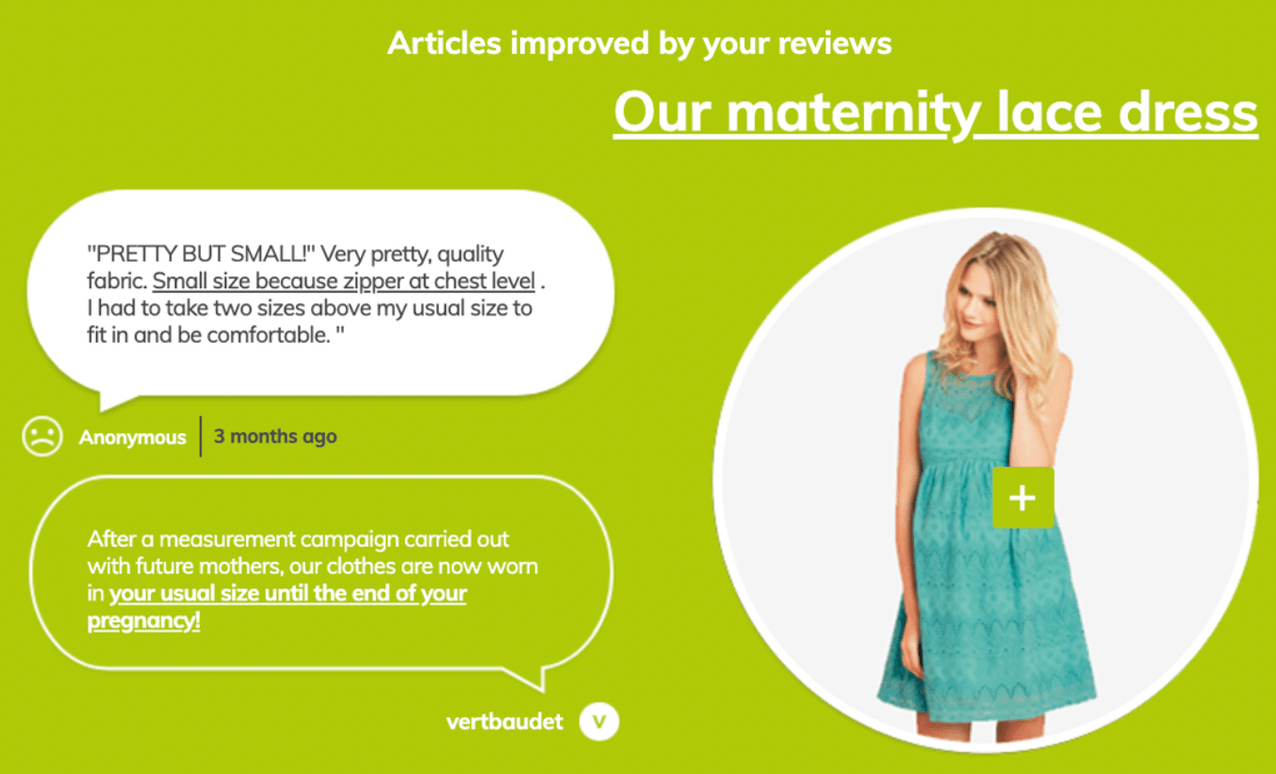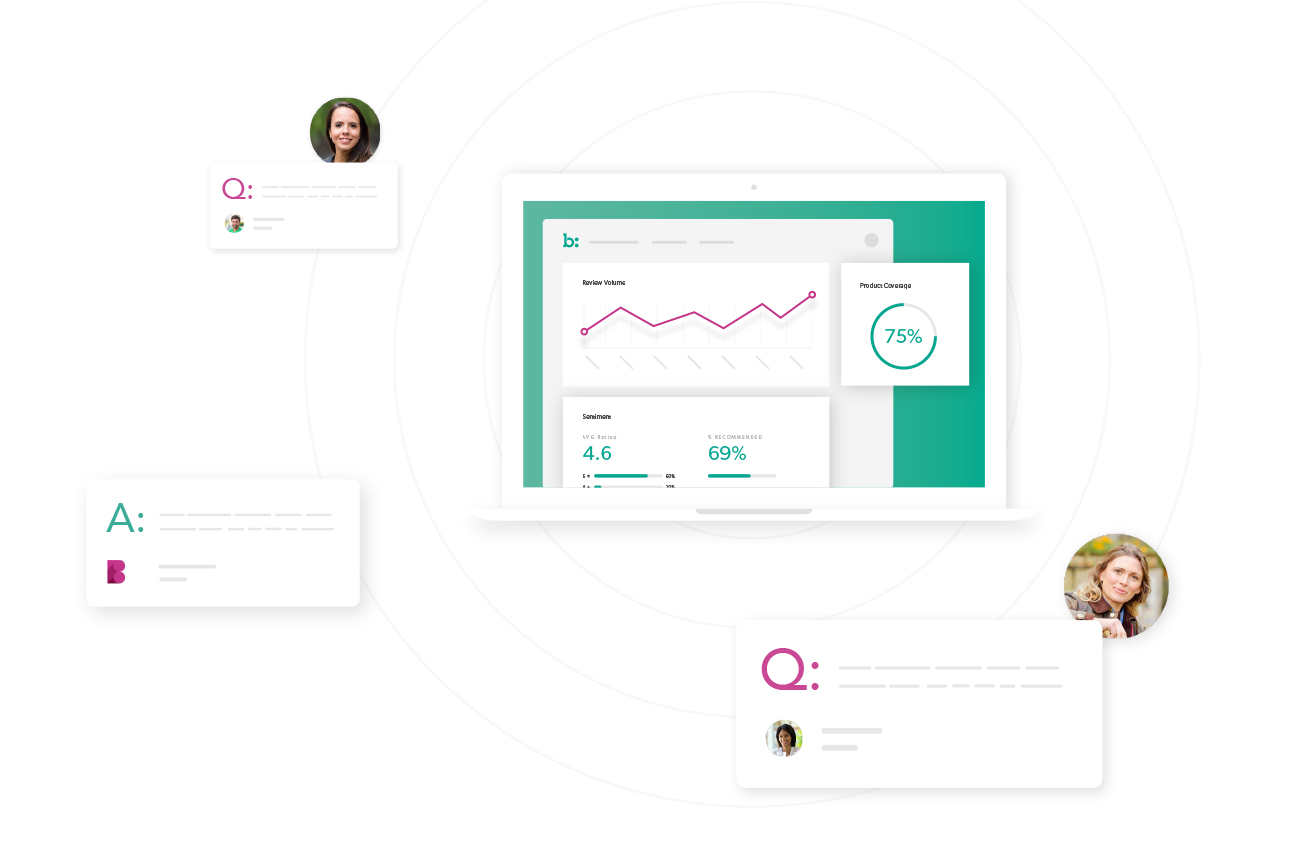February 8, 2023
We all understand the importance of putting our customers first. But how do we get into their heads to understand what they want and need? And then use that information to better serve them? Enter customer feedback tools.
Just like how user-generated content (UGC) helps you improve products, customer feedback tools help you better understand how people interact with your site and other online assets.
The most common types of customer feedback tools are surveys, chatbots, and heat maps. Surveys typically use multiple-choice or open-ended questions to gauge respondents’ opinions about different aspects of their experience. Chatbots make it easier for customers to submit instant feedback. Other tools like heat maps allow you to monitor user activity by tracking how people navigate your site.
All of these provide an easy way for customers to share their thoughts, preferences, and experiences with you.
Chapters:
- Why customer feedback tools are essential to your business
- 7 best customer feedback tools
- Make the most of your customer feedback
Why customer feedback tools are essential to your business
Customer feedback tools are vital for anyone who wants to keep up with the ever-changing expectations of their customers. They help you create more personalized experiences, increase conversion rates, and improve retention.
They can also help you uncover trends that lead to new product ideas as well as increased upsell and cross-sell opportunities.
But perhaps the biggest reason brands and retailers should invest in this type of software is because it helps them maintain an edge over their competitors. The more you know about your customers, the better empowered you are to serve them. The better you serve them, the more likely they are to become repeat shoppers and brand advocates.
Take apparel brand Vertbaudet, for example. The clothing giant kept receiving customer feedback that the fit of a line of maternity clothing needed adjusting.

They took this feedback on board and fixed the cut, leading to a 12% increase in sales. Simply by leveraging customer feedback found in UGC.
7 best customer feedback tools
Do a Google search for “customer feedback tools” and you’ll find a ton of options. There’s tools that allow you to set up polls, monitor where users drop off your site, and watch people interact with your content in real time.
Each service works differently. They may have different use cases or data-gathering methods. Some give you in-depth analyses. While others just report customer activity. Depending on your goals, you may find it helpful to work with multiple solutions at once. To help you navigate your options, here’s 7 of the best customer feedback tools available.
1. Qualaroo
Qualaroo is a customer feedback tool that uses noninvasive pop-ups to survey your website visitors and app users. The short-and-sweet questionnaires, called Nudges, are designed to help you ask targeted questions about the customer’s experience, without interrupting their visit or session. You can personalize your survey questions or use Qualaroo’s built-in templates.
The tool is powered by Watson, IBM’s artificial intelligence computing system. It analyzes customer data like their location, the amount of time they’ve spent on each page, and how often they visit your site to create user profiles and deliver more personalized surveys. Qualaroo then quickly evaluates their response to understand each respondent’s mood, intent, and needs. You can also set triggers to escalate replies that need urgent attention.
Qualaroo integrates with tools like Slack, Salesforce, and HubSpot, making it a flexible solution for most tech stacks.
2. Intercom
Intercom helps you connect with your website visitors and collect valuable customer feedback through a real-time messaging platform.
Like Qualaroo, Intercom’s chatbot analyzes user data and behavior to deliver customized survey questions. But what makes Intercom unique is the tools it gives brands and retailers to tweak their customer feedback collection efforts. You can run A/B tests on different questionnaires, target specific user segments, and even create entire campaigns across multiple channels.
In addition to collecting customer data and feedback, Intercom can also be used as a customer support tool. It allows you to deliver fast FAQ answers, suggest helpful resources, and provide detailed product information.
The tool’s advanced data processing is designed to help you get ahead of potential problems. But in the event of an issue, Intercom can fast-track specific conversations to a customer support agent or someone else on the team.
Intercom is perhaps one of the more popular customer feedback tools, with customers ranging from Facebook to Amazon.
3. Userbrain
Userbrain is a video customer feedback tool that allows you to set up “tasks” for a panel of professional testers. These tasks could include adding an item to cart, testing an app prototype, or trying out a new navigation menu.
The goal is to get feedback from real consumers before launching a new service, webpage, or feature. Every test includes a video recording, allowing you to uncover usability problems by watching and analyzing each session. The testers are also encouraged to talk openly about their experience as they navigate the site or app. This helps you collect valuable insights you can use to improve the layout and functionality of any solution — before going live.
Userbrain’s “pool” of 70,000-plus testers makes it easy to find users who match your target demographics. You can filter testers by location, gender, age, and device. Each tester has to pass a series of qualifications before working with Userbrain, ensuring you always get quality feedback and insights.
4. Typeform
Typeform is an intuitive customer feedback tool that empowers marketing and development teams to create seamless forms, surveys, and questionnaires. The tool’s customizable templates make it easy to get started and develop tests that follow the best practices of UX and design.
But what sets Typeform apart from other customer survey tools is logic jumps. Typeform allows you to develop multiple paths for each survey. For example, if a respondent says yes to a question, they’ll be shown different follow-up questions than someone who answers no. This functionality helps you create multiple surveys in one form. It also encourages better customer feedback by personalizing the test to each respondent’s unique situation.
5. Hotjar
Hotjar is like Google Analytics on steroids. It allows you to collect real-time feedback on how customers are interacting with your site, where they get stuck, and other valuable insights that can help you reduce your bounce rates and improve conversions.
It accomplishes all of this with heatmaps, a data visualization method that reflects which areas of the site users engage with and which areas they ignore. These heatmaps help you understand where people click and scroll. You can also watch recordings of real consumers using your site.
Hotjar can be customized to run entirely behind the scenes. You can also create suggestion boxes and surveys that allow you to collect real-time feedback from customers.
6. InMoment
InMoment is perhaps one of the more advanced customer feedback tools. It empowers you to aggregate various sources of customer feedback, including surveys, customer support transcripts, and social media comments. Built-in AI analysis tools help you uncover the most important insights and share them in easy-to-understand charts and reports.
Setting up InMoment’s customer feedback surveys is relatively straightforward. You can build multiple-choice questionnaires, long-form answers, and even develop customized follow-up questions based on a consumer’s response. Smart role-based reporting dashboards help you prevent information overwhelm by delivering the right information to the right teams.
InMoment is also unique in that it provides recommended actions based on the quality of the customer feedback it collects.
7. Bazaarvoice
We couldn’t put ourselves in the top position — as much as we’d like to. But Bazaarvoice’s Question & Answers tool helps you utilize all of the awesome customer feedback you uncovered.
You can then use it to create robust FAQs section that provide customers with the exact information they need to feel more confident about completing their purchase.
Make the most of your customer feedback with Bazaarvoice
Now that you have all of this powerful customer feedback, you’re able to improve your products and online shopping experiences. Also, you’re also able to get ahead of customers’ potential questions and hesitations. This allows you to build trust, reduce the burden on your customer support team, and improve your site’s conversion rates.
Delve even further with Bazaarvoice Insights & Reports tools, which allows you to leverage your existing customer feedback to uncover trends, track user sentiment, stack up against competitors, and update your page copy to help increase trust and conversions. As far as customer feedback tools go, it’s probably the best. But don’t just take our word for it.
Get started









